Sri Lankan Tradional Masks
Peacock Demon Mask (Mayura Raksha)
“Mayura Raksha” mask is a wood carving known for bringing peace, wealth and prosperity to house, business or property while warding off evil spirits. The masks represent three beautifully feathered peacocks on the sides and top of the mask. Contrary to its name, these masks are often used in ancient forms of dancing.
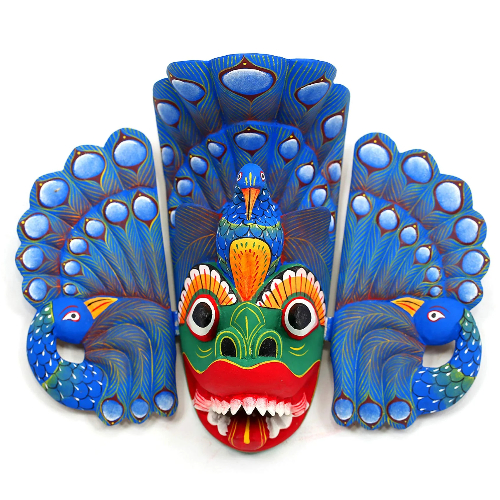
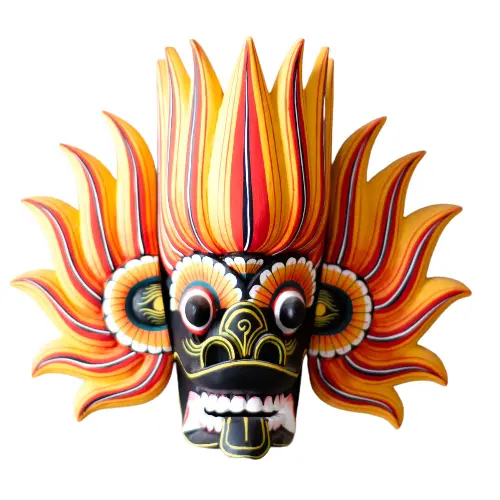
Fire Devil Mask (Ginidella Raksha)
"The Ginidella Raksha" mask is a Raksha mask which is means its job is to ward off evil. This mask is representing the emotion anger which is why the colors are red, orange, and yellow. The patterns on the ears are warding off all evil. The patterns on the ears and the face really draw your attention which the Sri Lankan people found really important.
King Cobra Mask (Naga Raksha)
“The Naga Raksha” mask, also known as the Snake Demon, uses a lot of colors and patterns to it. The most noticeable and attractive pattern is the hair which is shaped into cobras, therefore the name Snake Demon. It has a very long Tung to smell its enemies and the teeth to eat them which in this case are the Sri Lankan people.
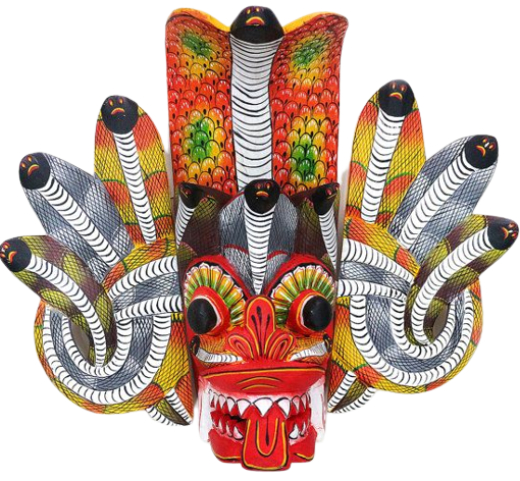
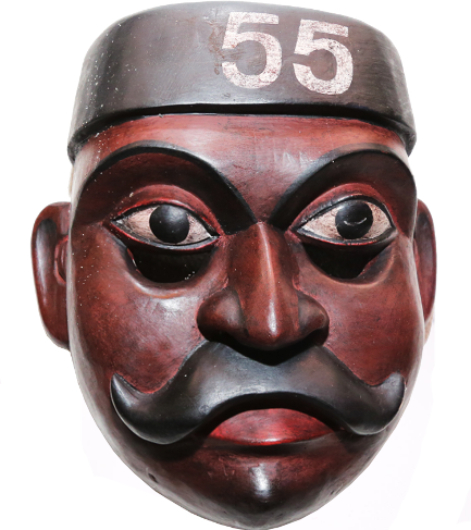
Kolam Dancer's Mask (Kolam Mask)
"Kolam" is a dance drama of rural Sri Lanka. Just like several other names for theatre traditions of south Asia, kolam refers to disguise and mimicry. The actors wear masks and costumes and perform with mime, dance and some dialogue. Carved from blocks of wood, "Kolam masks" are brightly painted with unique patterns of colors based on sex, age, and position in society. In addition to these types of Kolam masks, there is another group that are used by village shaman to treat various birth defects and diseases. These kinds look grotesque.
Sri Lankan Tradional Spices
Ceylon Clove
Prized for its distinct flavour and aroma, and also for its medicinal qualities, cloves are the immature buds of the evergreen tree Syzygium aromaticum , also known as Eugenia caryophyllus of the Myrtaceae family. A fully grown clove tree is about 15-20 metres tall and has smooth grey bark. Ceylon Clove is notably richer in oil than the clove varieties produced elsewhere in the world.
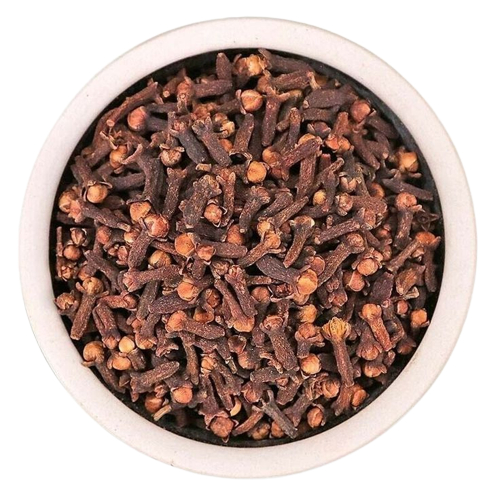
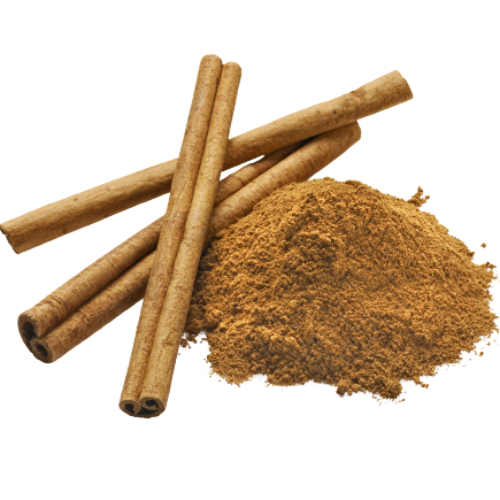
Powder and Sticks of Cinnamon
"Cinnamon is a spice that comes from the inner bark of the tropical Cinnamomum tree (colloquially known as the cinnamon tree), sold as rolled quills (cinnamon sticks) or ground into a fine powder. Sri Lanka was the only source of cinnamon, kept secret by Arab traders who wished to monopolize the market. Even now, cinnamon in its purest formcan only be found here.
Black Pepper (Ceylon Pepper)
In Sri Lanka, pepper or the woody perennial evergreen climbing vine, Piper nigrum, is cultivated over an area of 32800 hectares and majorly in the districts of Matale, Kandy, Kegalle, and Kurunegala where it’s grown either as a mono-crop or a mixed crop in coconut and tea plantations using live or dead stands as support. It’s also ideal for home gardens. Today, pure origin pepper enjoys a huge demand internationally, and the public is keener to discover spices that originate from a specific “terroir” just like wines. Ceylon Pepper is mainly exported to India, Germany and the USA and enjoys a growing demand from Australia and Canada.
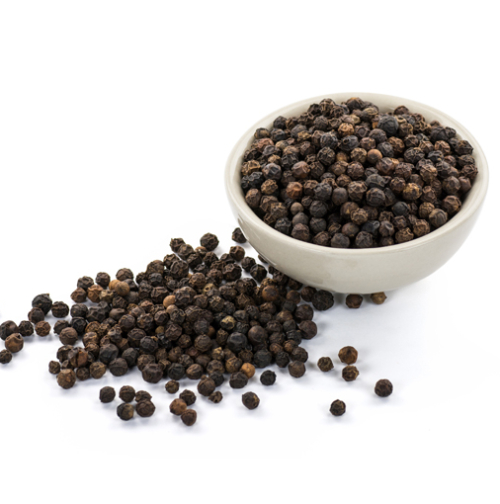
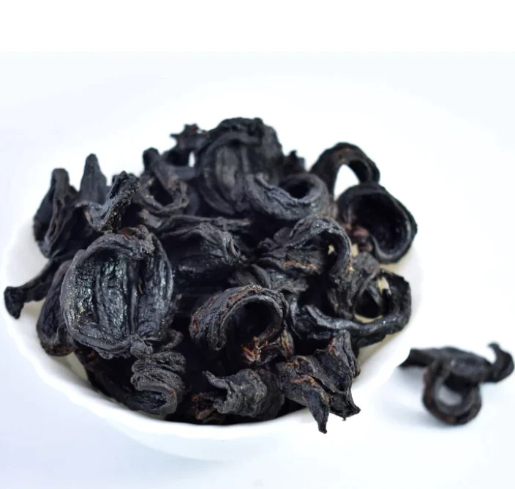
Goraka (Garcinia cambogia)
Garcinia gummi-gutta is a tropicalspecies of Garcinia. Common names include garcinia cambogia (a former scientific name), as well as brindleberry, Malabar tamarind, and kudam puli (pot tamarind). This fruit looks like a small pumpkin and is green to pale yellow in color.
Sri Lankan Foods And Drinks
Milk Rice
For something quite simple, the Sri Lankan dish of kiribath is one that is rich in meaning. It's basically made by cooking rice with coconut milk until all the liquid is absorbed, then shaping the sticky rice into blocks to be cut and served like slices of cake. It's often eaten with lunu miris, a sambol chili sauce we mentioned earlier, and sometimes sweetened with jaggery. What makes kiribath so rich in meaning? Well, traditionally kiribath is made for special occasions, particularly ones that mark important times of life like birthdays, New Year or just the first day of the month. This is also one dish that seems to be completely unique to Sri Lanka, with no outside influences recorded.
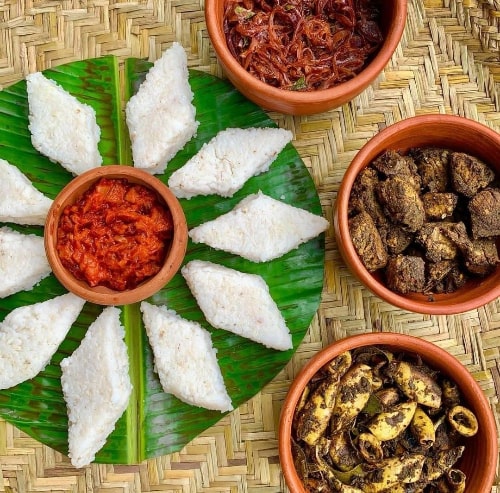

New Year Sweets
Sweet meats and special dishes are an essential facet of the Sinhala and Hindu New Year. While they have come to be identified with and annual festival, some of these food items are also prepared to mark special occasions. Here are some sweet meats and other foods prepared in Buddhist and Hindu households this time around. Every Buddhist and Hindu households have an elegant new year table adorned with delicious sweets around this festival period.
Rice And Curry
Rice and Curry is the traditional staple dish in Sri Lanka. It's eaten everywhere, usually twice a day by almost everyone. When you see “Rice and Curry” in Sri Lanka, it refers to several small plates of curry yummies varying from chicken and fish to vegetarian dishes like dal, garlic curry, aubergine curry, pumpkin curry, green bean curry… always served with rice and a few small plates of pickled vegetables. What struck us the most is the sheer variety of different curry dishes available in Sri Lanka such as jackfruit curry, beetroot curry, pumpkin, pineapple curry…all of them extremely tasty! Rice and Curry is also the most popular traditional Sri Lankan wedding food, in particular meat-based curries.

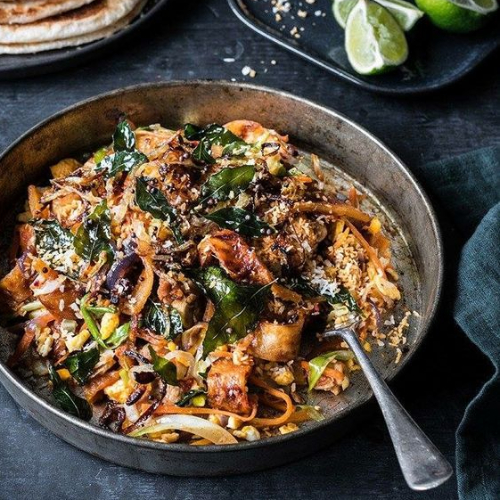
Kottu
There’s a reason why Chicken Kottu Roti is insanely popular in Sri Lanka! Chopped flatbread mixed and mashed together with chicken and vegetables and lots of aromatic spices, this chicken kottu roti recipe is as delicious as it is comforting, and it also works splendidly as an anti-hangover meal! You can’t ever visit Sri Lanka and leave without eating Kottu roti (also spelled Koththu or Kotthu). It’ll be hard to avoid it anyway. If you take a stroll down a busy street in the heart of Colombo (or any other urban/suburban part of the country) in the late evening, you’ll be greeted with the sound of street vendors making kottu roti from a fair distance away, followed immediately by the aroma of a tantalizingly delicious meal that will flood your mouth with saliva.
Sri Lankan Industrial Goods
Ceylon Tea
Ceylon tea refers to tea produced in the highlands of Sri Lanka. It's available in oolong, green, white, and black tea varieties. Aside from being rich in antioxidants, Ceylon tea is also linked to health benefits like improved heart health and blood sugar control, as well as weight loss. Ceylon tea is famed for its outstanding quality and superior, unparalleled taste and variety of tea. According to the 2017 EU Surveillance Report, Ceylon tea was marked as the cleanest tea in the market with regard to the pesticides and other chemicals usually found in tea.

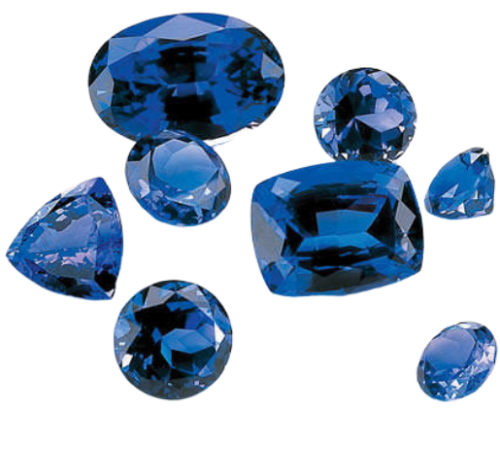
Gems
Sri Lanka is well known throughout the world for the large quantity and exquisite variety of its gemstones. These gemstones occur mainly in alluvial gravels found in valley bottoms into which flow tributary hillside streams which carry gem minerals released by weathering form the bed rock sources located at hilltops or hillsides. Apart from the sedimentary formation which carry gemstones some rocks too have been shown to contain gemstones particularly varieties of Corundum. There are also gemstones associated with pegmatite which constituted an important source. During early times Sri Lanka was once quite fittingly referred to as “Rathna-dweepa” which connotes the meaning “The Island of Gemstones”. The name Rathna-dveepa is found in many chronicles. A Merchants Guide “Periplus of the Erythrean Sea” presumed to have been complied during the first century.
Pottery
The key requirement of a vessel is always to serve the purpose it is designed for. Sri Lankan potters create their unique products with the use of equipment that is specially built for pottery. Traditional water-storing vessels designed by these creators such as Kalagediya and Gurulettuwa have a spherical shape with a wide inner space to store water. The clay used to make these vessels absorbs and removes the organic and inorganic contaminants from drinking water. Therefore, some of these vessels are used today in the same form while some have transformed to serve the suit modern lifestyle while delivering the same advantage to the user. Clay-based cooking pots that are used in traditional cooking still play an important role in the local kitchen. Potters keep these pots in the sun to dry for a few days after they are being shaped or they burn these pots in a kiln to make them hard and brittle. As a result, these pots are not damaged by the hours they get to spend on the fire.

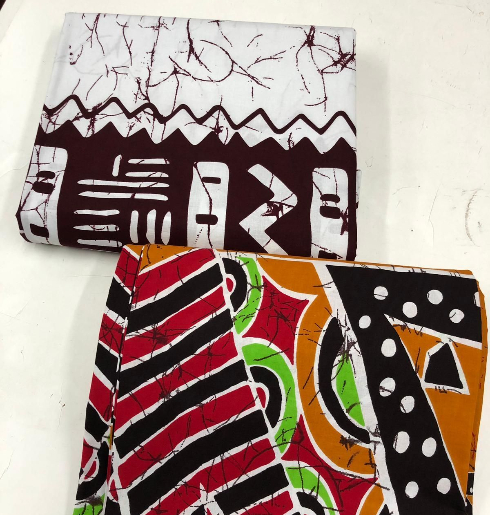
Batik Clothes
The Batik industry in Sri Lanka is a small scale industry which can employ individual design talent and creativity. Its economic benefit is profit from dealing with foreign customers. It is now the most visible of the island's crafts with galleries and factories, large and small, having sprung up in many tourist areas. Rows of small stalls selling batiks can be found all along Hikkaduwa's Galle Road strip. Mahawewa, on the other hand, is famous for its batik factories. Batiks incorporate many motifs and colours, some traditional, others highly contemporary and individual. Many display a vigorousness of design related to their origin. The material created by the batik-makers is used to produce distinctive dresses, shirts, sarongs and beachwear well-suited for tropical climes. Many tourists at seaside resorts such as Hikkaduwa wear batik clothes throughout their holiday. Apart from clothes, tablecloths, wall pictures, beach clothes, pure cotton and silk, men's and ladies' wear and bed covers are popular as a reminder of a visit to Sri Lanka.
Sri Lankan Arts and crafts
Ancient Wall Paintings At Sigirya
King Kashyapa reigned with an iron fist during the 5 th
Century AD, and it certainly shows in the artistic creations
that adorn the walls of Sigiriya. It is believed that the king
wanted Sigiriya to emulate the fabled Alakamanda, the city of
gods, a feat the ancient craftsmen possibly achieved, based on
the remains we can see today.
The walls of Sigiriya are believed to have originally been
plastered and painted white to convey the idea of purity,
similar to the manner in which the city of gods was depicted
in the ancient world. But Kashyapa was more intent on creating
a magnificent spectacle that would stand out and capture the
attention of anyone who visited the citadel.
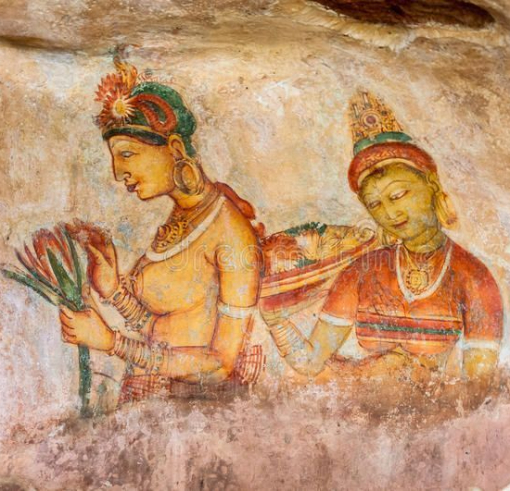
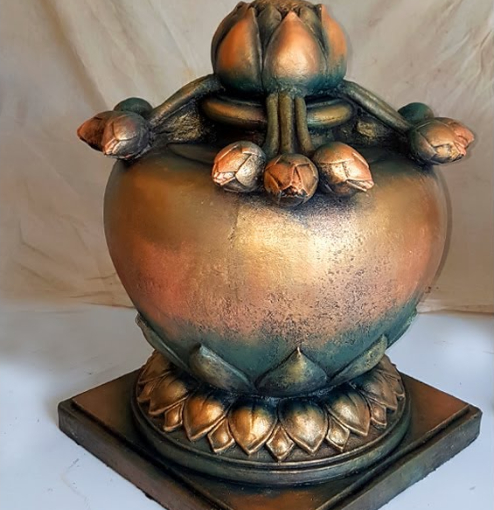
Pot Of Plenty (Punkalasa)
The Punkalasa, or the “pot of plenty”, which is a symbol of prosperity, is on the top right of the note. A Liya Vela, or “the stylized floral motif” appears on the right side of the note. Pun Kalasa, which is probably Sri Lanka's truly national art. It's considered as the sole symbol of prosperity. According to Buddhist culture, a full pot depicts fertility, prosperity and wealth.Punkalasa artistic sculptures are found on various archaeological digs around the country.
Traditional Sri lankan Kandy (udarata ) Dancer
Kandyan dance encompasses various dance forms popular and native to the area called Kandy of the Central Hills region known as Udarata in Sri Lanka, which have today spread to other parts of the country. It is an example of Sinhalese culture in Sri Lanka. Even though originally only males were allowed to train as dancers, there are now several schools that also train women in the Kandyan dance form. However, there is no definite Ves costume for women, and many female dancers have adapted the male costume in different ways. There are only a few performances of the Kohomba Kankariya now due to many social, economic and political reasons. The dance in its traditional form is still performed each year at the Dalada Perhahera in Kandy.
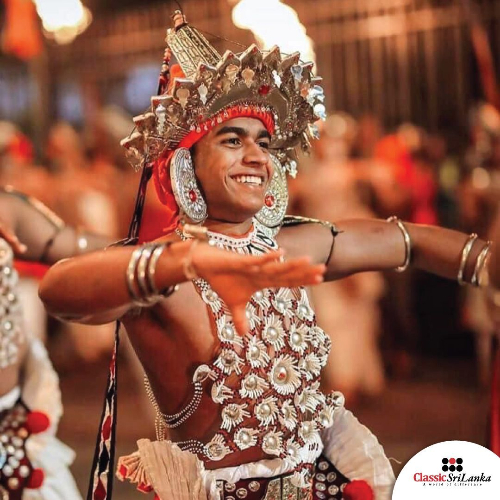

Wooden architecture and wood-carving
Wooden architecture and wood-carving are inextricably linked in the traditional wooden architecture of Sri Lanka, especially in Kandy, the central province of the country. The allied skills simultaneously highlight the construction and carving skills of master-craftsmen and architects; Kandyan wooden architecture is extremely rich in detailing, show-casing a range of wood-carving, much of which represents a remarkable combination of creativity and skill in manipulating the material. The abundance of several varieties of timber was instrumental in the prolific presence of wooden architecture. Owing to its durability and hardness, timber was used to make several structural components like beams and massive pillars, as also elaborately designed doors and windows. The traditional craft of wood-carving was practised by several highly esteemed crfatsmen and master-craftsmen, who trained apprentices in the principles of the craft.